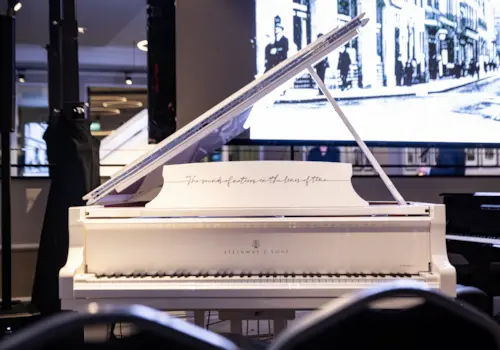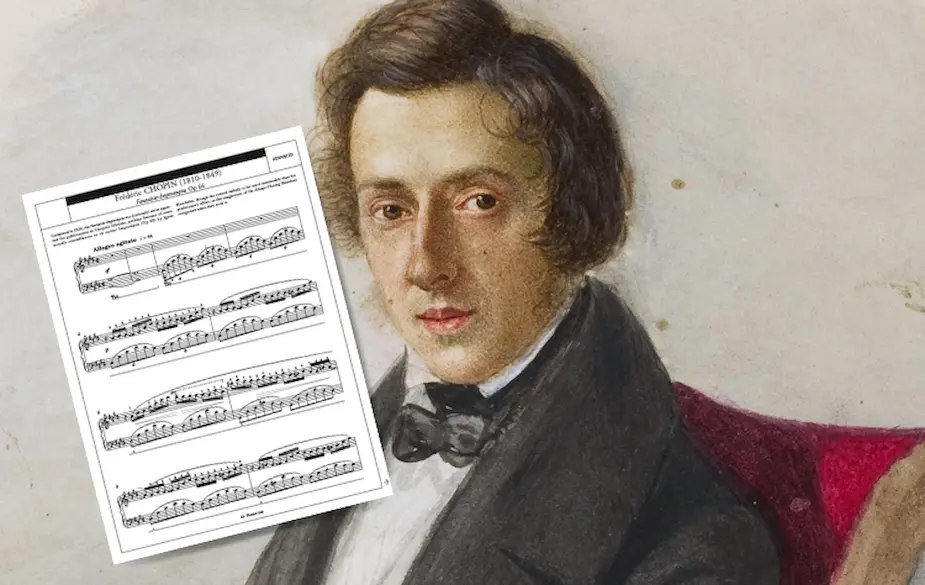This tempestuous masterpiece draws in pianists like bees to a honeypot, but Lucy Parham advises you to take the long view: it’s a piece too good to rush!

Listen to pianist Chenyin Li's rendition of the Fantaisie-Impromptu below to help you
There is a magical, enticing quality to the Fantaise-Impromptu.
It shares with the ‘Minute’ Waltz an immediacy and a joie de vivre; it’s a wonderful piece to play simply because it lies so well underneath the fingers, and this is one reason why many pianists want to learn it as soon as they have the technique.
However, they will have to wait a while: the Fantaise-Impromptu requires considerable technical mastery to create a long, continuous line from section to section. I have loved playing this piece since I was a child, so I felt that it deserved to be featured here.
How to master the opening
The Fantaise-Impromptu begins Allegro agitato. Bear in mind the Presto conclusion from the outset, and leave something in reserve. The agitato should prompt a sense of urgency in the outer sections – but not a tempo so fast that you cannot hear every semiquaver!
The first LH octave is a statement. Chopin’s sf marking requires you to draw the sound out of the piano with a complete movement of the whole arm. Pianists with small hands sometimes split this octave between the hands for extra safety; you don’t want to make a mistake on the first note of the piece! The first C# octave in bar 3 is often performed separated or broken; feel free to follow suit.
Rhythms of three against four are used throughout the piece. It’s never easy to play these rhythms, but knowing each hand separately and in tempo, always helps. One option is to work out such passages slowly to begin with, but you will have to fit the hands together at speed eventually. I suggest building up these passages bar by bar but always in tempo.
How to balance the hands
The Fantaise-Impromptu requires judicious pedalling. The challenge is to give a strong profile to the melody in the RH while ensuring that the LH harmony is always clear. Lifting the pedal in the middle or at the end of the bar will allow the final group of RH semiquavers to be heard.
Look at bars 23 and 24 below, where the RH requires a lighter touch and greater clarity on the second and fourth beats of each bar.

The entire Fantaise-Impromptu demands considerable finger dexterity from both hands, but especially in the LH. Take plenty of time over mastering the LH alone, with as flexible a wrist as you can manage.
The LH should not overshadow the RH. Work on achieving a leggiero touch for the RH semiquavers, as well as an elegant melodic shape. Use your fingertips to the sound from the key.
It’s worth paying particular attention to the final four RH semiquavers of each bar so that they are not gabbled or swamped by the texture. We should be shaping the piece in long lines and not in individual bars. Feel the sweep towards the middle of bar 7, and then through bar 8, to create a smooth and powerful crescendo. Take care, though, to return to piano by bar 10.
The RH thumb has the melody at the start of each beat in bars 13-17. Then the 5th finger takes over the melody and the dynamic is piano, so your thumb should be lighter; it will help to keep your elbow flexible. The accented note is not on a downbeat; bear in mind that this may hinder your efforts to achieve the effect of an echo.
Make a crescendo to the D# in the middle of bar 19. It should be espressivo and not banged out. In bar 23 the pp dynamic demands a lighter touch. Note how the bass line climbs chromatically the A at the beginning of bar 23 to the C# in bar 25.
Mastering the climax of the first section
In bar 30 the piece changes key and direction.

It’s worth remembering this point as a ‘road sign’ if you intend to memorise the Fantaise-Impromptu. Noting down the moment in your score will also help it to enter the unconscious.
The line from bar 29 to bar 37 (even to bar 41) is crucial! You must keep the sweep of the line. Making an unmarked dip in the dynamic at bar 33 will help you to grade the subsequent crescendo, which will require all your finger power. By the end of this passage you should be down to the very bottom of the key bed with the full weight of your fingers. When teaching, I describe this as ‘tearing’ the sound from the piano.
Keep the pedal down through bars 37-39 and ensure the first G# LH octave in bar 37 is fully weighted to give firm harmonic support. Bars 37-41 should be played with freedom, and the LH octaves drawn out of the keyboard without being harshly struck. They should help you to build a fitting climax to the first section of the Fantaise-Impromptu.
Tackle the middle section head-on
The central section is the heart of the piece in both expressive and structural. There is an enharmonic modulation from C# minor to a more enveloping Db major. This key is a favourite of Chopin’s (think of the ‘Raindrop’ Prélude, or the Berceuse) for evocations of darkness and stillness.
The LH in bar 41 and 42 is a statement in itself.

Keep the fingertips flat and overlap your legato. The pesante marking should draw from you not only heavy but well-weighted playing. Keep the pedal down through bars 41-42 so that the harmony has a firm support in the bass. Your best cantabile tone and sensitively overlapping, legato phrasing are required to shape the melody in the RH of bar 43.
Chopin’s sotto voce marking encourages you to evoke a more inward, subdued sound compared with the return of this theme in bar 51, which should be projected in a more extrovert manner. In bars 43 and 51 there is a trill on the RH Bb. If you find this difficult to fit in, I suggest you simplify and play a mordent rather than the full trill.
Overcoming a tricky key change
In bars 45 and 53 both hands share the same melodic line.
Think of it as a beautiful duet. In bar 53, the final beat in the RH is ornamented with decoration which should not be rushed: take your time, as if you were singing the line.

There is a modulation to Gb major on the second RH minim of bar 54 (the Bb): mirror this change of harmonic colour in your playing, and sink into the harmony. Note the RH accent but make it unforced. The seven-against-six in bar 60 is easiest to play when you don’t think about it too much! Don’t obsess about making each note fit perfectly: if you aim to play seven fluently in the RH and six fluently in the LH, the coordination will follow.
Take the ritardando marking at bar 81 seriously as you approach the ending!

You need time to adjust between the tempi of the middle section and the Presto which returns at bar 83. The drive to the work’s stormy conclusion begins at this point. As before, think and phrase in long, sweeping lines. Leave room for a small accelerando on the final page.
From bar 119 observe the alternating piano and forte dynamic markings. From the final forte at bar 123 make a five-bar diminuendo. This is a technically challenging semiquaver passage, so ensure that your elbow is free.
Finish strong
The theme returns in the LH, as if from afar. Balance it against the RH and aim for the G# semibreve in bar 132. This short coda ends the piece very gently, in stark contrast to the agitato opening. Spread the chords evenly in the last two bars, highlighting the top RH melody notes. Lift the final pedal very slowly, in order not to break the spell!







